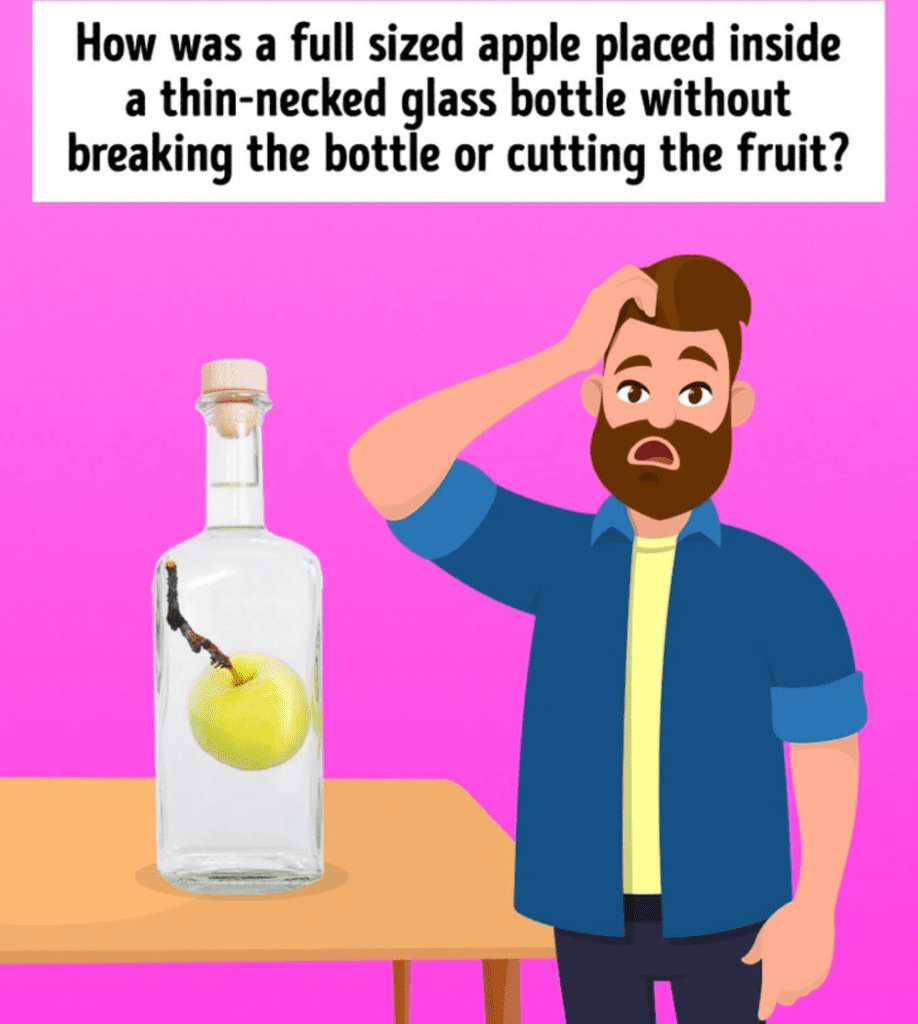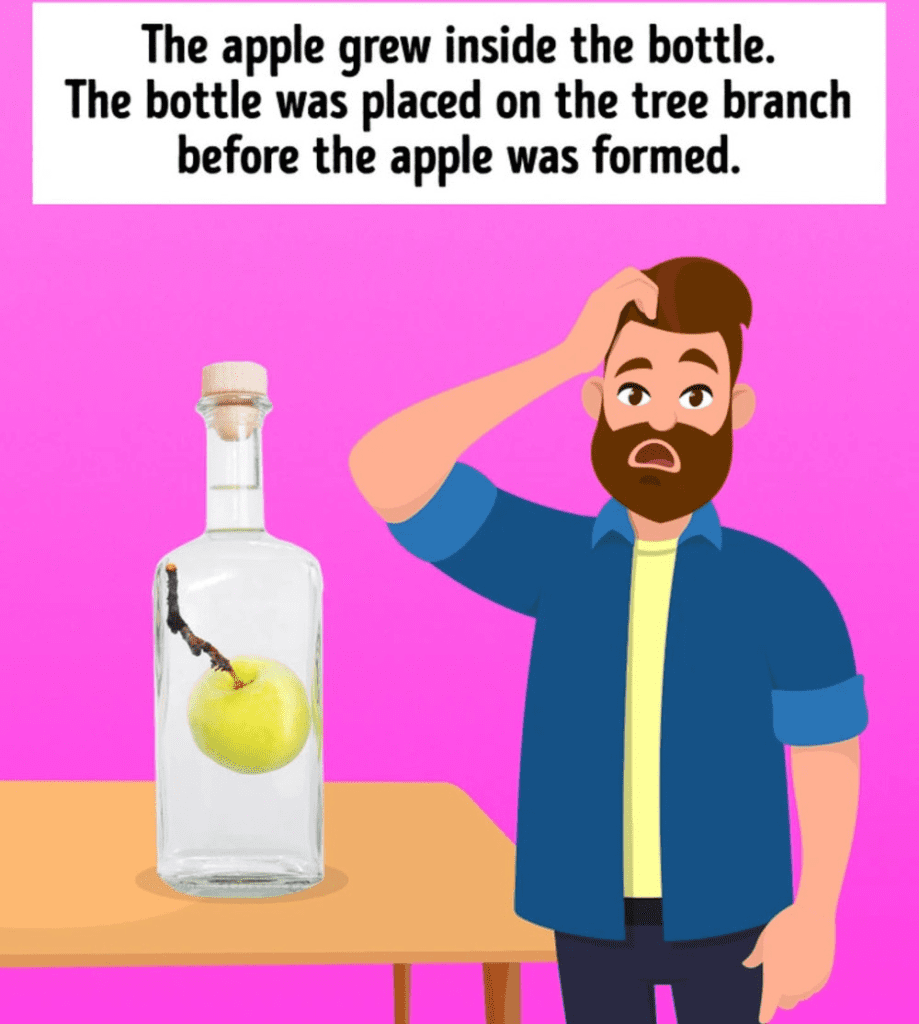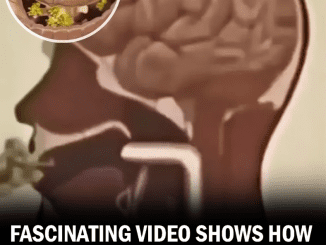Puzzles are a delightful way to stretch our minds, and sometimes, the simplest ones can have the most surprising solutions. One such riddle that has stumped many is this: How did a full-sized apple end up inside a glass bottle with a narrow neck, without breaking the bottle or cutting the apple? It sounds impossible at first glance, right? But as with many great puzzles, the answer lies in a clever, unconventional approach. Let’s dive in and solve this riddle together!

Common Misconceptions in Solving the Puzzle
When people first encounter this puzzle, they tend to think along traditional lines. Many assume the apple was somehow squeezed into the bottle, or that the bottle was cut and reassembled around the fruit. Others might even imagine complex methods involving flexible materials or an elaborate magic trick. However, these solutions overlook a simple yet ingenious approach that doesn’t require any manipulation of the apple or the bottle.
One of the biggest misconceptions is that the apple had to be put into the bottle after it was already fully grown. This assumption often leads people down overly complicated paths, missing the real solution that takes advantage of nature itself.
Step-by-Step Solution to the Puzzle
Let’s walk through the logical steps needed to crack this riddle. Understanding the growth process of an apple and considering the physical constraints of a bottle are essential here.
Step 1: Understanding How an Apple Grows
Apples don’t start as fully formed fruits; they begin as tiny buds on tree branches. Over time, these buds grow into blossoms and, eventually, into small fruits that continue to mature. This gradual process of growth is the key to solving the puzzle. It suggests that the apple wasn’t already fully grown when it encountered the bottle—it developed within it.
Step 2: Placing the Bottle on the Branch
The answer to this puzzle is as simple as it is clever. To get a full-sized apple inside the bottle without breaking or cutting anything, the bottle is placed around the apple blossom or tiny fruit while it’s still growing on the branch. By carefully placing the bottle over the budding apple, the fruit can grow inside the bottle, filling up the space as it matures, without any need to cut or alter the glass.
This method may require patience, but it’s surprisingly effective. Gardeners and farmers sometimes use this technique to grow fruit like apples and pears inside bottles for decorative or culinary purposes. Once the apple is fully grown, they cut the branch, leaving the fruit intact within the bottle.
Step 3: Why This Solution Works
This solution works because it allows the apple to develop naturally within the constraints of the bottle. As the apple grows, it takes on the shape and size permitted by the bottle’s space. Since the fruit was never forced into the bottle or altered in any way, the entire process remains seamless, keeping both the apple and the bottle intact.

Why People Often Overlook This Solution
Why do so many people miss this straightforward answer? It all comes down to our natural problem-solving instincts. When we approach puzzles, we’re often conditioned to think of them as tasks that require immediate action. This mindset leads us to believe the apple must have been placed inside the bottle once it was fully grown, overlooking the possibility that the answer might be rooted in nature’s own slow and steady growth process.
This puzzle teaches us a valuable lesson about creative problem-solving. Sometimes, the best solutions aren’t about drastic measures or complex techniques but about thinking outside the box and letting nature take its course.
Real-Life Applications: Where This Trick Is Actually Used
You might be surprised to learn that growing fruit inside bottles isn’t just a hypothetical puzzle solution; it’s a real technique used in agriculture and even the beverage industry. Farmers sometimes grow pears and apples inside bottles, which are then filled with alcohol to create unique, bottle-aged spirits. This process gives the fruit a unique shape and preserves it in the bottle, making it both a visual and culinary delight.
Gardeners also use this method for decorative purposes. Imagine a pear or apple beautifully suspended inside a glass bottle—it’s a striking display that’s sure to catch anyone’s eye. This approach to bottling fruit is a testament to human ingenuity and the ability to harness natural growth processes for creative purposes.
Why We Love Riddles Like This
Riddles that involve clever tricks or hidden solutions capture our imagination because they force us to challenge our assumptions. When you’re presented with an image of an apple in a bottle, it’s easy to assume that some complicated method was used to achieve the result. However, the true answer reveals that sometimes, the simplest solution is the correct one.
This type of puzzle encourages us to think critically and question our initial impressions. It reminds us that things aren’t always as they seem, and sometimes, thinking outside the box means letting go of our need for immediate answers and allowing time and patience to reveal the solution.
Conclusion: Embracing Patience and Creative Thinking
In the end, the puzzle of the apple in the bottle is a wonderful example of how creative problem-solving often lies in rethinking our assumptions and embracing patience. By placing a bottle over a budding apple and letting it grow naturally inside, we achieve what initially seems impossible. This simple solution defies our expectations and reminds us that the natural world is filled with surprising possibilities.
Did this riddle stump you at first, or did you figure it out? Puzzles like this remind us that sometimes, the answer isn’t about force or manipulation but a touch of cleverness and a lot of patience. So the next time you encounter a seemingly impossible puzzle, remember—nature and creativity might hold the key. Keep challenging yourself with more riddles, and who knows? You might discover new ways of thinking that help you see the world with fresh eyes. Happy puzzling!


